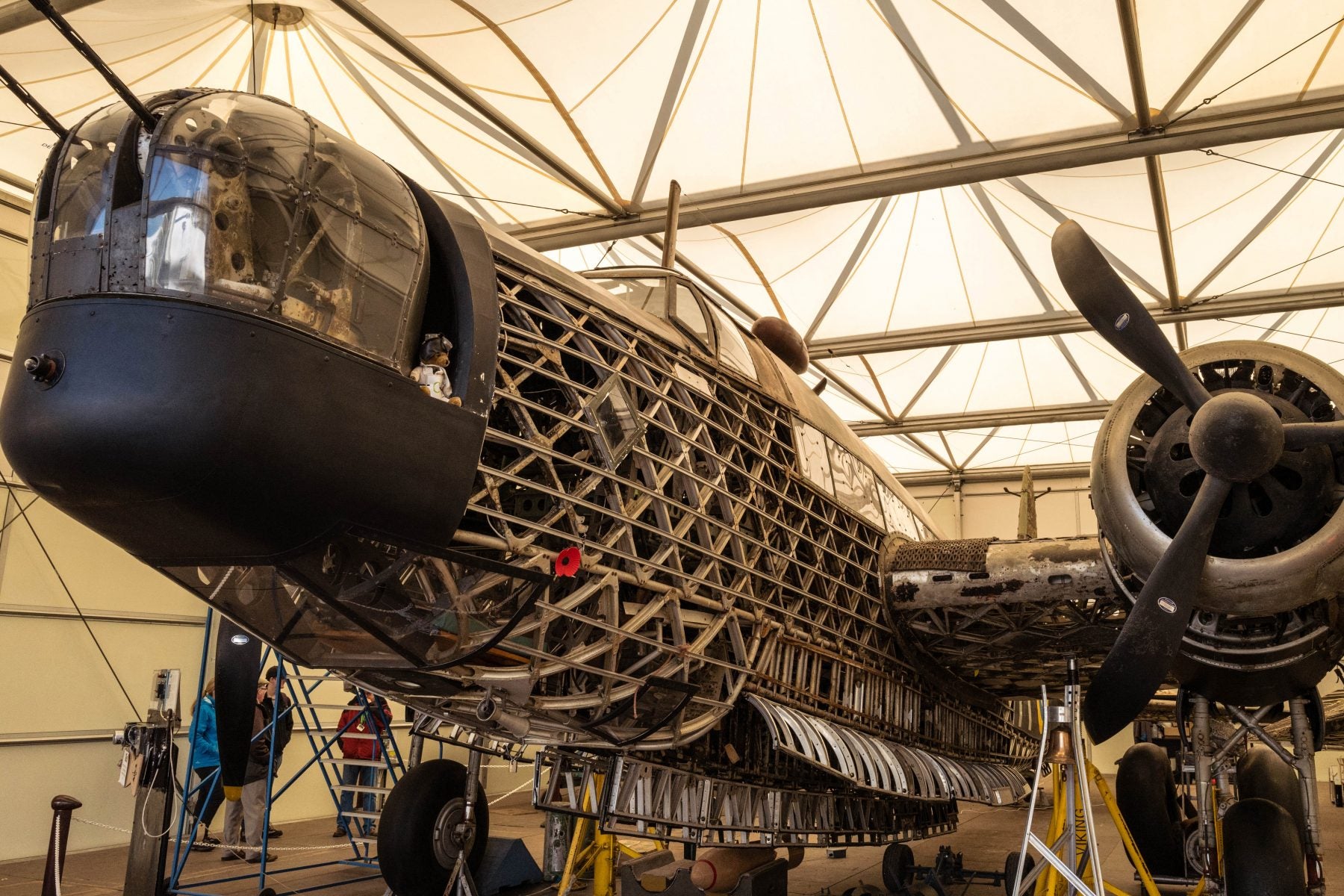On December 31, 1940, Scots airmen in a Vickers Wellington bomber plane were engaged in a training flight over Scotland’s Great Glen. When the engine faltered, the skipper ordered his crew to jump out. The plane crashed into Loch Ness, where it remained submerged for thirty-six years.
The Vickers Wellington model of long-range bomber represented a turning point when it first appeared in the service of Great Britain’s Royal Air Force. It was dubbed the “basket-weave plane,” unique for its “unusual lightness and strength,” according to a 1939 article in Science News-Letter. For its heavy load capacity and range, it was surprisingly maneuverable. The article reported that the Wellington “could bomb an objective more than 1200 miles away and return and still have an allowance for bad weather or ducking enemy fighting planes.” A prototype for the Vickers Wellington engaged in its first successful flight in 1936.
The bomber that crashed into Loch Ness—the last of its kind to see combat—was constructed at an auto-racing track-turned-aircraft-manufacturing hub and airfield called Brooklands, considered by Aerospace Historian to be the “birthplace of British aviation.” In the intervening decades, the plane sat at the bottom of Loch Ness, going unnoticed by “Nessie hunters” until significant advances in sonar technology detected it in deep, dark water. Divers soon found the plane in a remarkably well-preserved state, given that it had been lying at the bottom of a loch for decades. Underwater archaeologists soon joined the efforts to extract and study the plane.
Weekly Newsletter
Robin Holmes of Herion-Watt University worked to establish funding for the excavation and deployed underwater robotic vehicles to further investigate the plane. It came onshore in 1985, and to scientists’ surprise, it remained in good condition, in part due to the ample supply of peat in Loch Ness’s dark water. (For centuries, the people of northern Europe have used peat—made up of decayed sphagnum moss, which filters into lochs from nearby bogs—as a preservative.)
The Wellington returned to Brooklands, which had since been incorporated into an aviation and motoring museum. Brooklands engineers plugged the plane’s taillights into a modern battery. To everyone’s delight, they lit up and worked! Some of the crew’s personal items even remained inside. The bomber is on permanent exhibition at the Brooklands Museum.
Editor’s Note: An earlier version of this story stated that the Vickers Wellington was mistaken by sonar expert Martin Klein for the Loch Ness Monster. Klein, though involved with expeditions explicitly looking for the Loch Ness Monster, says he never thought the Vickers Wellington was itself the monster.







